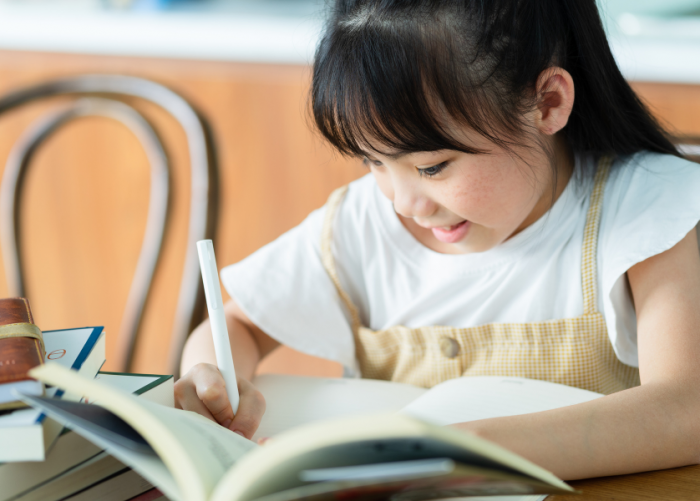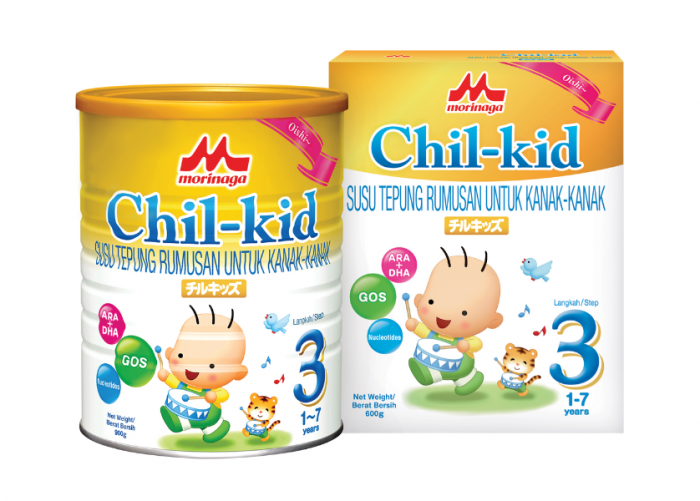If your child is constantly complaining of headaches and dizziness, has poor attention span or cannot remember what he has just read, chances are he may have a vision problem.
A lot of times, parents mistake their children’s misconduct as behavioural disorders such as Attention Deficit Hyperactivity Disorder (ADHD) because vision problems can bring out symptoms that mimic ADHD[1]. Some of these similarities include hyperactivity, distractibility and even irritability. The child is unable to sit still and struggles with reading, writing and comprehension. He tends to be careless when working on something, makes frequent mistakes and often loses interest in learning and activities. He also gets tired and anxious very easily.
Due to the similarity in symptoms, sometimes a child may be misdiagnosed. It is important to remember that the child is unable to tell you that the reason for his agitation is because he can’t see properly and he may think everybody else sees the same way he sees.
Vision Affects Learning and Behaviour
 Not only does poor vision affect his behavior, it can directly impact the child’s learning ability up to 80%[2]. A child needs many abilities to succeed in school and good vision is key. This is because learning is visual and happens through the eyes. In order to learn and succeed in school, the eyes are required to provide the following abilities[3]:
Not only does poor vision affect his behavior, it can directly impact the child’s learning ability up to 80%[2]. A child needs many abilities to succeed in school and good vision is key. This is because learning is visual and happens through the eyes. In order to learn and succeed in school, the eyes are required to provide the following abilities[3]:
Visual Acuity: Have the ability to see clearly in the distance (for viewing the white board), at an immediate distance (for the computer) and up close for reading a book.
Eye Focusing: Have the ability to quickly and accurately maintain clear vision as the distance from objects change, like looking from the whiteboard to a paper on the desk and back.
Eye Tracking: Have the ability to follow a moving object such as a thrown ball.
Eye Teaming: This is the ability for both eyes to coordinate when moving the eyes along a printed page, to judging distances and depth in classwork and sports.
Eye-Hand Coordination: This is the ability to use visual information to direct the hands to draw a picture, or hit a ball.
Visual Perception: This is the ability to form mental pictures and comprehend what is happening in a story he is reading, organize mental images and ideas on to a printed page as letters, words and drawings, or recognize letters and numbers such as telling the difference between “b” and “d” or doing mathematics. Visual Perceptual skills also include retention and recollection of details that have been read and learnt.
If any of these visual skills are lacking or deficient, a child will have to work so much harder to learn as effectively as those with good vision. Children who struggle with vision problems also experience headaches, eyestrain and fatigue. In the end, education and participation in sports and outdoor activities can suffer.
As a child progresses through school, his vision will face increasing demands, putting more stressors on the child to focus longer on more complex schoolwork. This frustration can lead to anxiety and mood disorders. Some common vision problems include near-sightedness or myopia[4], far-sightedness or hyperopia[5], astigmatism[6] or a slight eye misalignment[7].
It is important to watch out for symptoms of vision problems before assuming that they are behavioural issues. Also, have their eyes periodically examined by an eye care professional such as an optometrist or ophthalmologist most importantly at six months of age, at three years old and before school starts.
Signs[8] that indicate a child has vision problems[9] include:

- Short attention span
- Develops disruptive classroom behaviours or cannot sit still
- Talks when the teacher is teaching and distracts other students
- Avoids or struggles with reading and writing despite being in bright light
- Covers one eye when reading
- Tilts head to read and write
- Is excessively clumsy and has poor coordination
- Loses place while reading, sees double, skips lines or words
- Careless when working, making frequent mistakes
- Poor penmanship
- Difficulty remembering what has been read
- Complains of headaches, dizziness, discomfort and fatique
- Frequently blinks or rubs eyes
8 Ways to Protect and Enhance Your Child’s Vision
Knowing how crucial visual health is − not just for children’s developmental or schooling years but for all aspects of life for an entire lifetime − it is obvious that vision is a precious gift and must be preserved, protected and enhanced wherever possible. Here are 10 ways parents can take care of their child’s visual health.
1: Know Your Family History
If anyone in your family has been diagnosed with an ocular condition or vision disorder, chances are your child will be at a higher risk of developing it as well. Vision disorders tend to be hereditary[10].
2: Get Outdoor Exercise

Exercise[11] improves cardiovascular health, physical health as well as healthy blood vessels in the eyes. Spending an hour outside everyday can improve your child’s overall health as well as lower the risk of ocular conditions[12] like myopia or short sightedness. Simply taking walks and playing outdoors will help muscles in their eyes relax as children spend too much time in near-vision activities such as reading, doing schoolwork, using a digital device, building puzzles or even playing with toys.
When too much near vision activities are performed over a long period, the muscles in the eyes become fatigued. Going outdoors encourages the eyes to look at greenery, objects and scenes in the distance.
3: Cut Down Screen Time to Limit Blue Light Effect
Limit the time your child uses electronic gadgets like smartphones, tablets, computers and even watching TV. All electronic screens emit blue light and blue light has been found to be harmful to the eyes as it can damage the retinas[13].
This is called phototoxicity. The amount of damage depends on the wavelength and exposure time and can cause blur vision, focussing problems, dry eyes and even myopia.
4: Wear Sunglasses Outdoors
In Malaysia, the sun shines brightly. Sometimes the glares can be intense. The sun has harmful ultraviolet (UV) rays and excessive exposure has been linked to serious ocular diseases later in life. Nowadays, there are sunglasses for children that come in a variety of shapes, sizes and colours. Some are wrap around ones that secure the frames to the temples so they don’t fall off during play. When buying sunglasses for children, ensure they provide 100% UV protection.
5: Avoid Eye Injuries and Infections
Research has said that one of the most dangerous places in the home is the kitchen. Be careful when your children play there. If dangerous chemicals, cleaning fluids, detergent and even cooking sauces get splashed into the eye, it can even threaten vision loss.
- sharp and pointy objects out of your child’s arm’s reach. Children shouldn’t be playing with chopsticks, spoons and forks. Be careful of the sharp corners of tables or opened kitchen cabinet drawers. If a young child bumps into them, he could bang his head and eyes.
Children also shouldn’t be playing with potentially dangerous toys. Or drinking from metal straws that could poke the eye if they miss their aim.
If your child is playing sports, or is into swimming, have them wear protective eyewear to safeguard the eyes from trauma or from chlorine in the pools.
Avoid eye infections by teaching your child not to touch or rub his eyes to avoid spreading bacteria, grit and dirt from his fingers to his eyes. Even the smallest irritations in the eyes can affect vision.
6: Offer Work or Study Breaks
 Sustained reading or concentration on homework can be very straining for the eyes as it forces the eyes to stay focused in the same direction. It is beneficial to provide regular breaks. A simple strategy to prevent eye strain[14] is the 20-20-20 method: Take a 20 second break every 20 minutes and look at something 20ft away.
Sustained reading or concentration on homework can be very straining for the eyes as it forces the eyes to stay focused in the same direction. It is beneficial to provide regular breaks. A simple strategy to prevent eye strain[14] is the 20-20-20 method: Take a 20 second break every 20 minutes and look at something 20ft away.
7: Get Routine Eye Exams
For school age children, regular eye exams are important as they help uncover vision problems, detect eye diseases early and help preserve vision long term. A child’s vision can change over the years and sometimes, unexpectedly, from ages six to 18. This is especially true if he complains of frequent headaches, blurry vision or squints to see objects.
8: Encourage Healthy Eating
 our busy lifestyles, many parents don’t have the time to prepare and cook meals at home for their children. Many parents will “ta-pau” or take-away from eateries to provide a quick solution for a meal. However, a lot of these foods do not contain the nutrients essential to keep their bodies, including their eyes, healthy. Vitamin A, for example, supports the functioning of the conjunctivital membranes and cornea[15]. Omega 3 Fatty Acids[16] such as DHA can impact vision development in children. The following foods that contain essential nutrients for the eyes include:
our busy lifestyles, many parents don’t have the time to prepare and cook meals at home for their children. Many parents will “ta-pau” or take-away from eateries to provide a quick solution for a meal. However, a lot of these foods do not contain the nutrients essential to keep their bodies, including their eyes, healthy. Vitamin A, for example, supports the functioning of the conjunctivital membranes and cornea[15]. Omega 3 Fatty Acids[16] such as DHA can impact vision development in children. The following foods that contain essential nutrients for the eyes include:
Lutein and Zeaxanthin[17]: Eggs, kale, spinach, romaine lettuce, broccoli, peas, and many other green leafy vegetables.
Vitamin C[18]: Blueberries, strawberries, bell peppers, tomatoes, kiwi, guava, citrus fruits like oranges, pomelos and cruciferous vegetables (broccoli, cabbage, cauliflower).
Vitamin E[19]: Vegetable oils, nuts, green leafy vegetables, whole grains.
Vitamin A and Beta Carotene[20]: Carrots, tomatoes sweet potatoes, pumpkin, eggs and green leafy vegetables.
Omega 3 Fatty Acids[21]: Salmon, sardines, mackerel, tuna, herring, soybeans, flaxseeds,
chia seeds and walnuts. Eggs, and also plant oils like flaxseed, soybean and canola oil.
Zinc[22]: Red meat, poultry, seafood, nuts, dried beans, soy foods, milk and other dairy products and whole grains.
Morinaga Chil-kid

For young children aged one to seven, Morinaga Chil-kid has the necessary nutrients that supports overall development as well as eye development. In fact, it is packed with over 45 essential nutrients such as ALA and DHA, GOS, five Nucleotides, Omega 3&6 Long Chain Polyunsaturated Fatty Acids and 27 vitamins and minerals including Vitamin A, E and Zinc.
The growing-up milk is formulated in a balanced ratio of AA and DHA, protein, fat and energy specifically designed according to Asian children’s physique. Complemented with a balanced diet, regular intake of Morinaga Chil-kid ensures that your loved one receives the dietary support needed to promote optimum growth and development.
For more information on Morinaga Chil-kid, click on this link.

 Not only does poor vision affect his behavior, it can directly impact the child’s learning ability up to
Not only does poor vision affect his behavior, it can directly impact the child’s learning ability up to 



